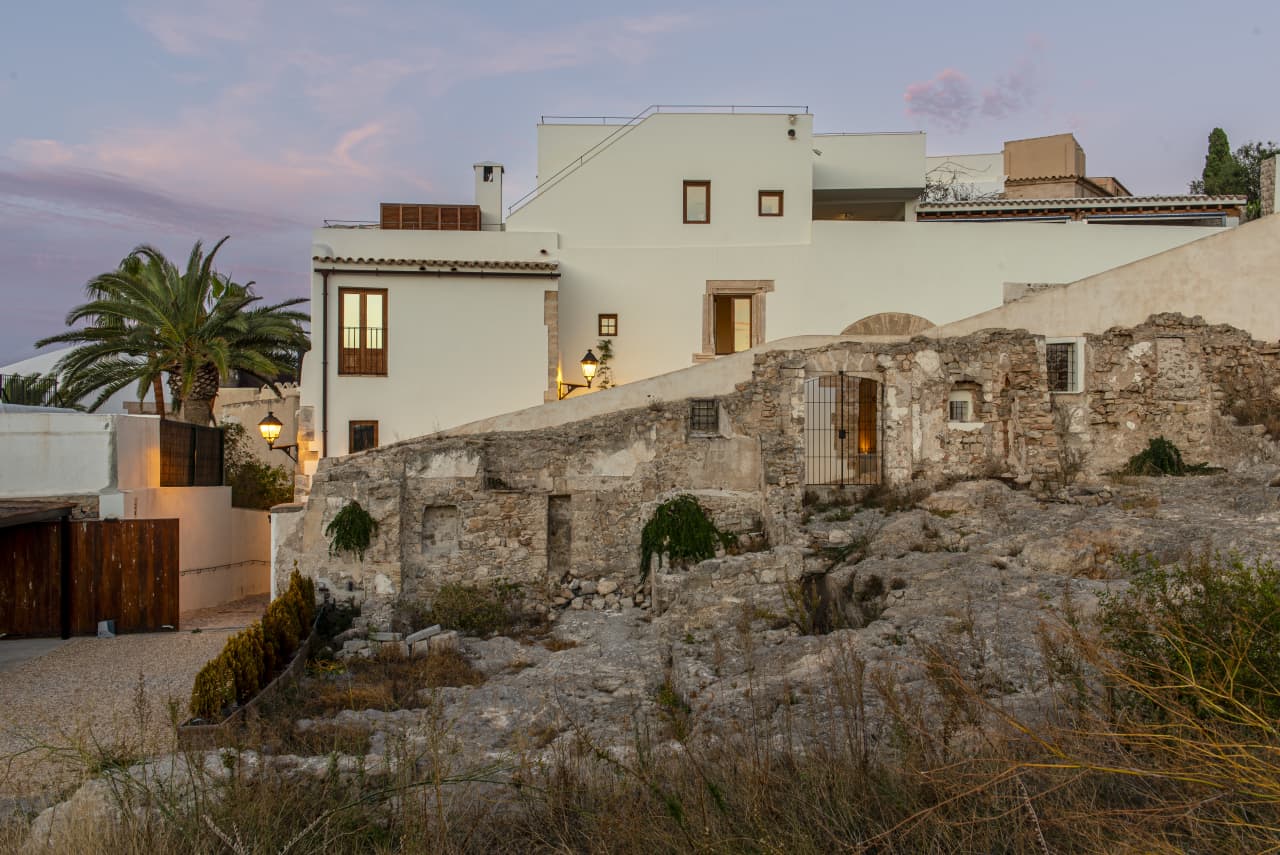Crypto Prices Crashed, But True Believers Are Holding On
A divide is growing between investors looking to make money and those who believe in crypto’s mission.
Crypto prices plunged this year, but Drew Larsen says that is no concern.
Over the past two years, Mr. Larsen, 54, has poured about 10% of his savings into cryptocurrencies like bitcoin, Ethereum and solana. He believes it is a smart hedge for his investment portfolio, the rest of which is in real estate, stocks and bonds. But more than that, he feels a deep connection to the idea of digital assets, which makes the pain of bitcoin’s plunge this year a lot more bearable.
“I actually do think it has the potential to save the world,” said Mr. Larsen, a founder of two software companies who now lives in Colorado with his family. So far, his crypto holdings have lost about 40% in value this year.
With the crypto market crashing, there is a growing divide between investors who are looking to make money and those who believe in its mission. Some true believers, like Mr. Larsen, tout crypto as a way to replace, or at least push back against, big banks and the traditional fiat-money system. Others are more enthusiastic about blockchain, a kind of digital ledger underpinning cryptocurrencies, that could be used to change how records are tracked and stored in areas as varied as medicine and real estate.
Some of the traders knuckling down on crypto are fairly well off, which means they have money to lose—and a higher tolerance for risk. Many, including Mr. Larsen, didn’t have their investments tied up in lending platforms like Celsius Network LLC and Voyager Digital Ltd., both of which have frozen withdrawals and filed for bankruptcy protection. Customers there haven’t been able to access their money for weeks.
Some investors buy cryptocurrencies as if they are stocks, holding them in a crypto exchange and hoping prices rise so they can make a profit. Others deposit their crypto into yield-earning accounts with firms that then invest those digital assets or lend them out to others for a fee. Bitcoin, the biggest cryptocurrency, is riding the wave of July’s market rally. It is up about 28% in July, but is still down about 65% from its November record high.
Maria Saavedra, a 31-year-old software test engineer in California, said she views most cryptocurrencies as hyped-up assets with little legitimate value. But in March, after the crypto market had already endured a rough few months, she started buying the two biggest cryptocurrencies, bitcoin and Ethereum. She has invested about US$8,000 total.
Ms. Saavedra says the plunge in prices makes it a great time to buy on the cheap. She bought $1,000 in Ethereum on Thursday when leading cryptocurrencies rallied after the Federal Reserve’s interest-rate increase.
Like Mr. Larsen, she said she supports stricter regulation for the crypto market. She thinks it would give the industry more legitimacy—and probably give a boost to her holdings.
Her other long-term investment strategy? Handbags. Ms. Saavedra recently paid $10,000 for a black Hermès Kelly bag and plans to cash out the investment when she nears retirement. Until then, the gold-plated bag sits in her closet, resting in its original cloth bag and stuffed to keep its shape.
Zachary Bertucci, a 25-year-old real-estate investment analyst in Chicago, has put about 10% of his investment portfolio in Ethereum and lesser-known cryptocurrencies like chainlink and polygon. Mr. Bertucci started buying crypto in September, when prices were still on the way up. His holdings have lost about half their value,but he plans to keep buying more each month and hopes to eventually rake in enough gains to buy an investment property.
“That money you’re investing, it could go away or it could triple,” Mr. Bertucci said. “As long as you’re willing to accept that risk, then you’re OK.” The other 90% of his investment portfolio is in stocks and an ETF that mirrors the S&P 500.
Not all crypto believers are loading up.
Tyler Lahti began investing in crypto in 2014, adding about $5,000 total in bitcoin and Ethereum up until early this year. After the recent downturn, he doesn’t plan to add more.
Still, Mr. Lahti said he is bullish on the sector. As an accountant, he has high hopes for smart contracts, which are software programs on the blockchain that automatically execute transactions between parties.
“If it does work out, it’s beneficial to the world and I’ll make money,” said Mr. Lahti, who is 31 and lives in Georgia.
Mr. Larsen, the Colorado entrepreneur, has experience dealing with risk. He co-founded a sales-related tech company in 1999, shortly before the dot-com bubble burst, then exited in 2009. He sold another venture, a software-based workout platform, in 2019. The following year, he got into crypto, partly because he didn’t want to “sit around doing nothing.”
Mr. Larsen attends a monthly crypto happy hour, where topics of conversation can range from the price of bitcoin to how to persuade your spouse to invest in it. Still, he said he doesn’t believe most cryptocurrencies are for the average investor, likening crypto to investing in early-stage startups.
The exception, in his mind, is bitcoin. He views it as a long-term savings method, and he thinks he might one day hand down his bitcoin holdings to his children.
“I guess I would say I came for the money,” Mr. Larsen said, “but stayed because of the philosophy.”
Reprinted by permission of The Wall Street Journal, Copyright 2021 Dow Jones & Company. Inc. All Rights Reserved Worldwide. Original date of publication: July 30, 2022.
 Copyright 2020, Dow Jones & Company, Inc. All Rights Reserved Worldwide. LEARN MORE
Copyright 2020, Dow Jones & Company, Inc. All Rights Reserved Worldwide. LEARN MORE
This stylish family home combines a classic palette and finishes with a flexible floorplan
Just 55 minutes from Sydney, make this your creative getaway located in the majestic Hawkesbury region.
As Paris makes its final preparations for the Olympic games, its residents are busy with their own—packing their suitcases, confirming their reservations, and getting out of town.
Worried about the hordes of crowds and overall chaos the Olympics could bring, Parisians are fleeing the city in droves and inundating resort cities around the country. Hotels and holiday rentals in some of France’s most popular vacation destinations—from the French Riviera in the south to the beaches of Normandy in the north—say they are expecting massive crowds this year in advance of the Olympics. The games will run from July 26-Aug. 1.
“It’s already a major holiday season for us, and beyond that, we have the Olympics,” says Stéphane Personeni, general manager of the Lily of the Valley hotel in Saint Tropez. “People began booking early this year.”
Personeni’s hotel typically has no issues filling its rooms each summer—by May of each year, the luxury hotel typically finds itself completely booked out for the months of July and August. But this year, the 53-room hotel began filling up for summer reservations in February.
“We told our regular guests that everything—hotels, apartments, villas—are going to be hard to find this summer,” Personeni says. His neighbours around Saint Tropez say they’re similarly booked up.
As of March, the online marketplace Gens de Confiance (“Trusted People”), saw a 50% increase in reservations from Parisians seeking vacation rentals outside the capital during the Olympics.
Already, August is a popular vacation time for the French. With a minimum of five weeks of vacation mandated by law, many decide to take the entire month off, renting out villas in beachside destinations for longer periods.
But beyond the typical August travel, the Olympics are having a real impact, says Bertille Marchal, a spokesperson for Gens de Confiance.
“We’ve seen nearly three times more reservations for the dates of the Olympics than the following two weeks,” Marchal says. “The increase is definitely linked to the Olympic Games.”

Getty Images
According to the site, the most sought-out vacation destinations are Morbihan and Loire-Atlantique, a seaside region in the northwest; le Var, a coastal area within the southeast of France along the Côte d’Azur; and the island of Corsica in the Mediterranean.
Meanwhile, the Olympics haven’t necessarily been a boon to foreign tourism in the country. Many tourists who might have otherwise come to France are avoiding it this year in favour of other European capitals. In Paris, demand for stays at high-end hotels has collapsed, with bookings down 50% in July compared to last year, according to UMIH Prestige, which represents hotels charging at least €800 ($865) a night for rooms.
Earlier this year, high-end restaurants and concierges said the Olympics might even be an opportunity to score a hard-get-seat at the city’s fine dining.
In the Occitanie region in southwest France, the overall number of reservations this summer hasn’t changed much from last year, says Vincent Gare, president of the regional tourism committee there.
“But looking further at the numbers, we do see an increase in the clientele coming from the Paris region,” Gare told Le Figaro, noting that the increase in reservations has fallen directly on the dates of the Olympic games.
Michel Barré, a retiree living in Paris’s Le Marais neighbourhood, is one of those opting for the beach rather than the opening ceremony. In January, he booked a stay in Normandy for two weeks.
“Even though it’s a major European capital, Paris is still a small city—it’s a massive effort to host all of these events,” Barré says. “The Olympics are going to be a mess.”
More than anything, he just wants some calm after an event-filled summer in Paris, which just before the Olympics experienced the drama of a snap election called by Macron.
“It’s been a hectic summer here,” he says.

AFP via Getty Images
Parisians—Barré included—feel that the city, by over-catering to its tourists, is driving out many residents.
Parts of the Seine—usually one of the most popular summertime hangout spots —have been closed off for weeks as the city installs bleachers and Olympics signage. In certain neighbourhoods, residents will need to scan a QR code with police to access their own apartments. And from the Olympics to Sept. 8, Paris is nearly doubling the price of transit tickets from €2.15 to €4 per ride.
The city’s clear willingness to capitalise on its tourists has motivated some residents to do the same. In March, the number of active Airbnb listings in Paris reached an all-time high as hosts rushed to list their apartments. Listings grew 40% from the same time last year, according to the company.
With their regular clients taking off, Parisian restaurants and merchants are complaining that business is down.
“Are there any Parisians left in Paris?” Alaine Fontaine, president of the restaurant industry association, told the radio station Franceinfo on Sunday. “For the last three weeks, there haven’t been any here.”
Still, for all the talk of those leaving, there are plenty who have decided to stick around.
Jay Swanson, an American expat and YouTuber, can’t imagine leaving during the Olympics—he secured his tickets to see ping pong and volleyball last year. He’s also less concerned about the crowds and road closures than others, having just put together a series of videos explaining how to navigate Paris during the games.
“It’s been 100 years since the Games came to Paris; when else will we get a chance to host the world like this?” Swanson says. “So many Parisians are leaving and tourism is down, so not only will it be quiet but the only people left will be here for a party.”
This stylish family home combines a classic palette and finishes with a flexible floorplan
Just 55 minutes from Sydney, make this your creative getaway located in the majestic Hawkesbury region.






















